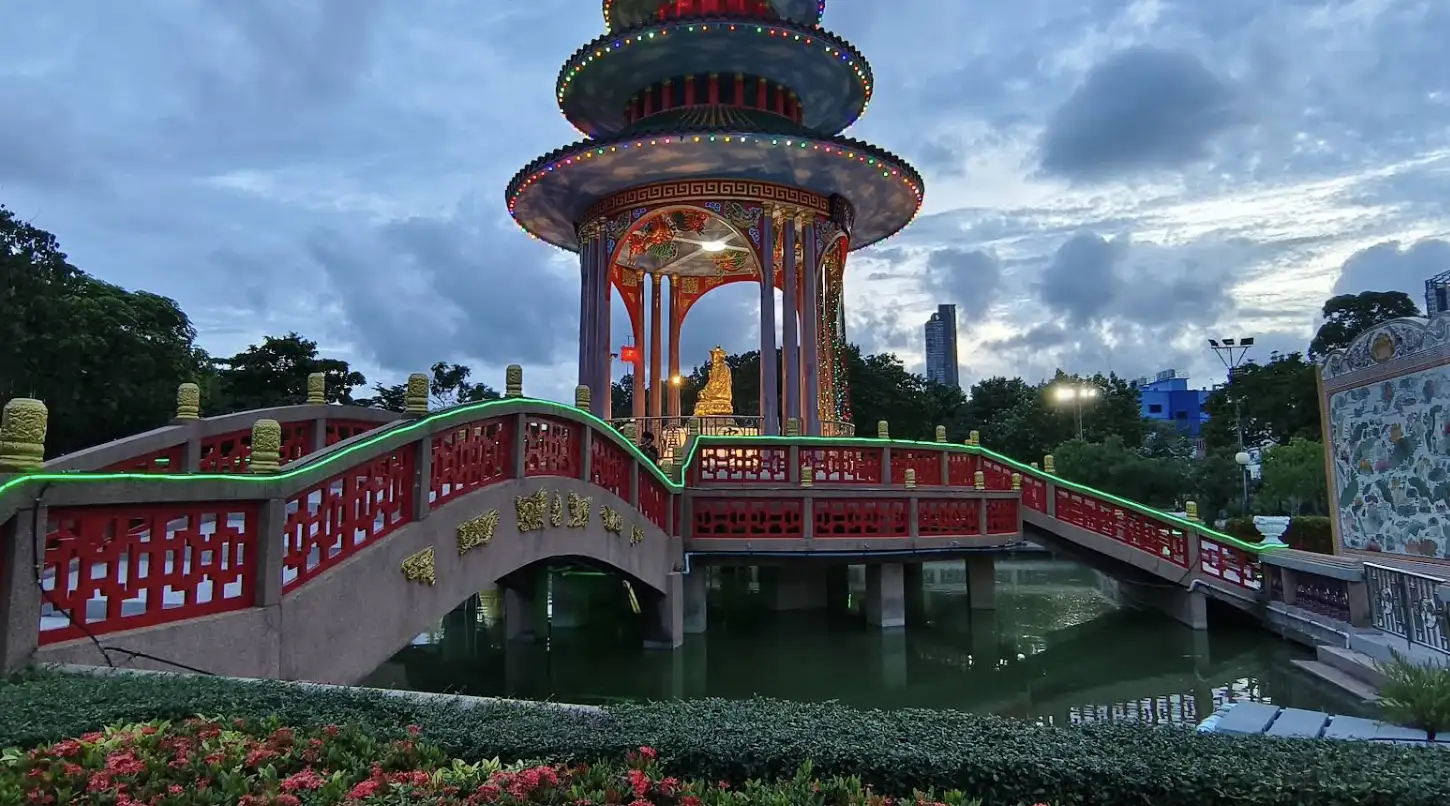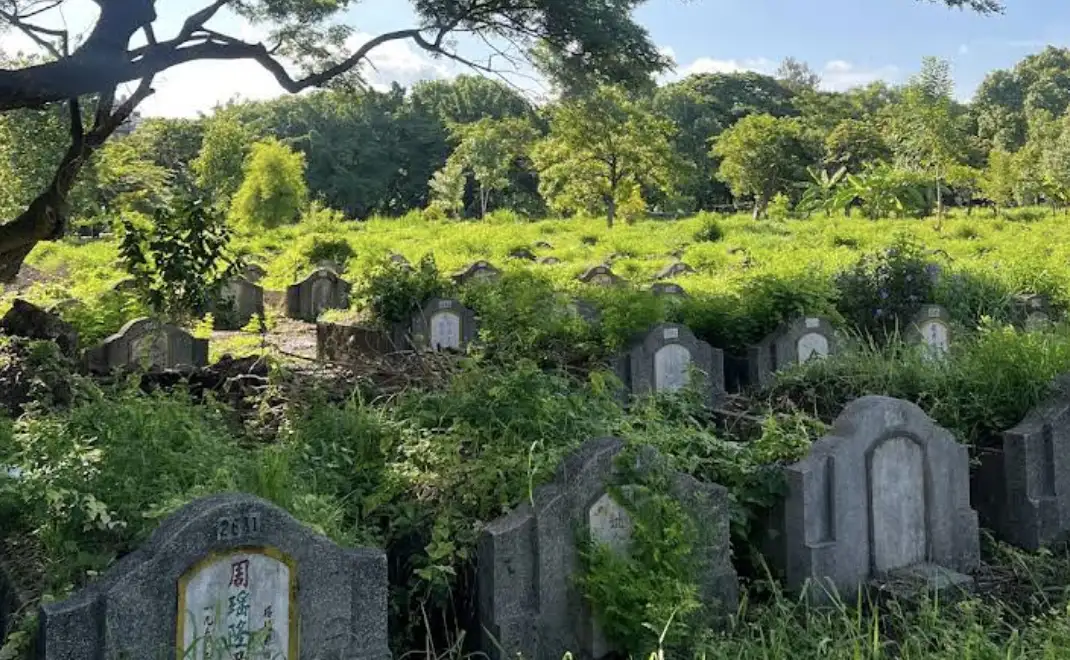Nestled in the bustling metropolis of Bangkok, where neon lights and chaotic markets dominate the scene, lies an unexpected oasis of tranquility: the Teochew Cemetery Park. Located at 1 Soi Charoen Rat 3, Thung Wat Don, Sathon, Bangkok 10120, Thailand, this lesser-known spot is a fascinating blend of history, culture, and serene beauty that left me enchanted during my recent visit. As a traveler who’s always on the lookout for off-the-beaten-path experiences, stumbling upon this place felt like uncovering a secret chapter of Bangkok’s story. Let me take you through my journey to this unique destination, sharing the sights, sounds, and emotions that made it unforgettable.
Discovering the Teochew Cemetery Park
I first heard about the Teochew Cemetery Park from a local friend who mentioned it as a quiet place where history and nature intertwine. Intrigued by the idea of a cemetery that doubles as a park, I decided to make the trip. Getting there was straightforward—using Google Maps, I hopped on a Grab bike from my hotel near Sukhumvit. The ride took about 20 minutes, weaving through Bangkok’s vibrant streets until we reached the quieter Huai Khwang district. As we approached, the urban clamor faded, replaced by an unexpected calm that hinted at the sanctuary awaiting me.

The entrance to the Teochew Cemetery Park is unassuming, marked by a simple gate that could easily be overlooked. There’s no grand signage or touristy fanfare, which I found refreshing. It felt like stepping into a place that locals cherish but hasn’t been overtaken by guidebooks or Instagram crowds. The park is maintained by the Teochew Association of Thailand, a nod to the significant Chinese-Teochew community that has shaped Bangkok’s cultural landscape for centuries.
A Walk Through History
As I stepped inside, I was immediately struck by the sprawling greenery. The park spans a large area, dotted with ancient trees, well-kept lawns, and winding paths that invite exploration. Unlike typical cemeteries, this one doesn’t feel somber. Instead, it’s a place where life and memory coexist harmoniously. The gravestones, many adorned with intricate Chinese inscriptions and colorful offerings, tell the stories of the Teochew immigrants who settled in Thailand generations ago.
Walking through the rows of tombs, I couldn’t help but feel a deep sense of history. Some graves were simple, while others were elaborate, with ornate carvings and small altars where families left incense, fruits, and paper offerings. I learned from a caretaker that the cemetery dates back to the early 20th century, serving as the final resting place for many Teochew Chinese who played a vital role in Bangkok’s development. The Teochew community, known for their entrepreneurial spirit, contributed significantly to the city’s trade and commerce, and this cemetery stands as a testament to their legacy.
What struck me most was the care taken to maintain the site. The grass was neatly trimmed, and there were no signs of neglect. Families still visit regularly, leaving fresh flowers and performing rituals, which added a layer of warmth to the experience. It felt less like a cemetery and more like a living tribute to a community’s heritage.
A Park for the Living
Beyond its historical significance, the Teochew Cemetery Park is very much a space for the living. As I wandered deeper, I noticed locals using the area as a public park. Elderly residents practiced tai chi under the shade of banyan trees, while joggers followed the paths that meandered through the grounds. There were even a few families having picnics, their laughter mingling with the chirping of birds. The juxtaposition of a cemetery and a recreational space was initially surprising, but it made sense in the context of Thai culture, where death is often viewed as a natural part of life’s cycle.
One of my favorite moments was finding a small pond near the center of the park, surrounded by lotus flowers and shaded by overhanging trees. I sat on a nearby bench, soaking in the peacefulness. The air was cool, a rare respite from Bangkok’s relentless heat, and I watched as dragonflies skimmed the water’s surface. It was one of those moments where time seemed to slow down, and I felt completely at ease, far removed from the city’s chaos.
Cultural Insights and Unexpected Encounters
As I explored further, I came across a small pavilion where a group of elderly men were playing Chinese chess. Their animated chatter in Teochew dialect filled the air, and one of them, noticing my curiosity, invited me to watch. Through a mix of broken English and gestures, he shared that the park is a gathering place for the Teochew community, especially during festivals like Qingming, when families come to honor their ancestors. He pointed out a nearby shrine, where incense burned steadily, and explained that it’s a place for prayers and reflection.
This interaction was a highlight of my visit. It reminded me how travel is often about these fleeting, human connections that bring a place to life. The man’s pride in his heritage and his warmth toward a curious outsider like me made the experience feel personal and meaningful.
Practical Tips for Visiting
If you’re planning to visit the Teochew Cemetery Park, here are a few tips based on my experience:
- Getting There: The park is located in Huai Khwang, accessible by taxi, Grab, or public transport. The nearest MRT station is Huai Khwang, about a 15-minute walk away. Google Maps is your friend for navigation—use the link provided to pinpoint the exact location.
- Best Time to Visit: Early mornings or late afternoons are ideal, as the weather is cooler, and the park is livelier with locals. Avoid midday heat, especially in Bangkok’s hotter months.
- What to Bring: Comfortable walking shoes, water, and a hat for sun protection. If you’re interested in photography, a camera is a must—the blend of nature and historical elements makes for stunning shots.
- Respect the Space: While it’s a public park, it’s also a cemetery. Dress modestly, keep noise to a minimum, and avoid disturbing any rituals or offerings you might encounter.
- Nearby Attractions: The park is close to other cultural gems like the vibrant Huai Khwang Night Market, where you can grab some delicious street food after your visit.
Reflections on the Experience
Visiting the Teochew Cemetery Park was a reminder of why I love exploring places that don’t make it onto every tourist’s itinerary. It’s not just about the destination itself but the stories it holds and the way it connects you to a community’s past and present. The park’s serene atmosphere, combined with its cultural significance, offered a refreshing contrast to Bangkok’s high-energy vibe. I left feeling a deeper appreciation for the city’s diversity and the enduring legacy of its immigrant communities.
For travelers seeking a quiet escape or a chance to connect with Bangkok’s lesser-known history, the Teochew Cemetery Park is a must-visit. It’s a place where you can slow down, reflect, and find beauty in the unexpected. As I rode back to my hotel, the city’s noise and lights enveloping me once again, I carried with me a sense of calm and a story I couldn’t wait to share.
Final Thoughts
The Teochew Cemetery Park isn’t just a place to visit; it’s a place to feel. It’s where history whispers through the gravestones, where nature offers a moment of peace, and where the warmth of the local community makes you feel welcome. If you’re in Bangkok and looking for something beyond the usual temples and markets, take a detour to this hidden gem. You might just find, as I did, that the quiet corners of a city often hold its most profound stories.

